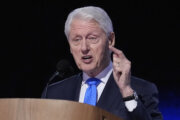The times have changed in college athletics. A landscape where athletes couldn’t pocket so much as a few dollars for an autograph has morphed into an environment where they can make up to six or seven figures from their name, image and likeness.
Bryce Young, the starting quarterback at the University of Alabama from 2020-2022 and the 2021 Heisman Trophy winner, was reportedly offered more than $1 million in endorsement deals while in college and carries a NIL valuation north of $3 million, according to the sports news and data site On3. A player’s NIL valuation estimates the monetary value of their name, image and likeness.
Olivia Dunne, a junior gymnast at Louisiana State University–Baton Rouge with more than 10 million followers on social media, has said she’s also made seven figures in endorsements.
NCAA rules on athletes accepting benefits and earning money for their name, image and likeness changed abruptly in June 2021. That’s when the U.S. Supreme Court ruled in NCAA vs. Alston, a loosely related case, that the association could not bar member schools from offering certain education-related benefits to student-athletes.
Following the ruling, the rules on NIL in college athletics changed in mere days. The NCAA website breaks these changes down into four points, summarized here:
— Athletes can engage in NIL activities in compliance with state laws, and colleges can be a resource for NIL legal questions.
— Athletes can use professional service providers to help navigate NIL activities.
— Student-athletes in states without NIL laws can still engage in such activities without violating NCAA rules.
— States, individual colleges and athletic conferences may impose reporting requirements.
Many of these deals are now set up through “collectives,” which are separate third-party businesses typically formed by boosters or fans of a specific school with a stated purpose of creating and supporting NIL opportunities for the school’s athletes, such as public appearances, autograph signings and brand deals. These organizations have opened the door for student-athletes to have greater access to a wide variety of brands.
[Read: 5 Myths About Athletic Scholarships.]
“Collectives are making up a great deal of the NIL transactions that are happening,” says Jim Cavale, founder and CEO of INFLCR, a third-party app that works with more than 200 colleges on NIL management and helping athletes find endorsement partnerships, according to the company website.
Nearly 70% of the transactions on the INFLCR app come from collectives, he says. “That’s an important evolution. The question is, ‘How sustainable is that?'”
How NIL Works
Thirty-two states have enacted NIL laws, according to Saul Ewing LLP, a national law firm that advises universities and colleges on legal and compliance issues. In states with no concrete guidelines, athletes and parents should consult school athletic departments and compliance offices when considering NIL deals, experts say.
Most state laws and school policies preclude student-athletes from using their name, image and likeness to endorse certain products such as alcohol or gambling, says Peter Schoenthal, an attorney at Florida-based Bruno & Schoenthal.
Additionally, NIL policy prohibits four things, says Mit Winter, an attorney at Kennyhertz Perry in Kansas and Missouri, and a former college basketball player:
— Deals without a quid pro quo. The athlete must do something in return for payment, such as providing a service or making a social media post.
— No deal or payment can be tied to an athlete’s athletic performance or achievement.
— Deals can’t be recruiting inducements, meaning deals can’t be offered in return for a commitment to attend a specific school.
— Schools can’t enter into NIL deals with their own athletes. All deals must be made through brands or outside agencies.
Some of the early deals to come out of the new era of NIL were sponsorship agreements with gyms, pet care companies and restaurants at local and national levels. De’Coldest Crawford, a wide receiver at Nebraska who had already become a viral sensation in high school for his name, signed an NIL deal with an Omaha-based HVAC company in 2022.
Carley Barjaktarovich, a shortstop on the softball team at Lehigh University in Pennsylvania, got in on the NIL action by signing a deal with the Lehigh Valley IronPigs, a local minor league baseball franchise. Barjaktarovich, who was already working within the organization, makes appearances and helps with marketing, promotions and social media.
Barjaktarovich can now use her status as a college athlete in a more public-facing role. Since she hadn’t been tracking NIL closely, the rule changes surprised her in 2021.
[READ: Sports Betting on College Campuses: What to Know]
“I assumed that one day those rules would be changed,” she says. “I didn’t really know that it would be within my playing time in college.”
Barjaktarovich notes that she worked with her school to help clear the deal, having discussions with officials who oversee compliance. She also must report details of NIL activities to the school via the INFLCR app.
NIL Collectives
Collectives are one of the biggest developments in the NIL landscape since 2021, experts say.
There are more than 200, Winter says. Every school in a “Power Five” conference — the Atlantic Coast Conference, Big Ten, Big 12, Pac-12 and Southeastern Conference — has at least one and most Division I schools also have one, he says.
Collectives generally operated as for-profit businesses at first, Winter says. Now, many hold a 501(c)(3) nonprofit status, which allows tax-deductible donations.
“Those nonprofits generally will go out and find other nonprofits or charities, usually in the local community or state where the related school is and they’ll partner up athletes with these other charities,” Winter says. “The athletes will do promotional work for the charities and help them raise money.”
As the prominence of collectives grew, questions arose about their legality and potential role in recruiting. In May 2022, the NCAA released guidance regarding collectives, stating that they would be considered “boosters” and are not permitted to be involved in the recruiting process. For example, collectives cannot enter into an NIL deal with a prospective high school athlete or an athlete in the NCAA Transfer Portal as a way to secure the commitment from that athlete.
Prospective student-athletes and parents should be aware that entering into an NIL deal with a college prior to committing could result in NCAA violations.
“The NCAA is really focused on the recruiting inducement rule,” Winter says. “Some collectives and boosters have been violating that rule.”
The Value of a Personal Brand
The big money sports in the NCAA historically have been football and men’s basketball. At the professional level, there’s a clear pay gap between men’s and women’s sports. There is some concern that this disparity will extend to the NIL era, with top male athletes cashing in while their female counterparts settle for smaller deals.
“To avoid Title IX issues, collectives are funding athletes competing in women’s sport, and often select those via their social media following or engagement,” says Thilo Kunkel, a professor and director of the Sport Industry Research Center at Temple University in Pennsylvania, who also founded a company to help student-athletes with social media engagement and opportunities.
There have also been concerns that athletes in mid-tier schools and outside of NCAA Division I sports would see little reward from NIL. The truth is more complicated and tied closely to individual creativity, Kunkel suggests.
“The university brand has value that helps athletes charge a price premium,” he says. “However, the real value is with individual athletes.”
While being a star player on the nation’s top football or men’s basketball team may provide a name recognition bonus, lesser-known student-athletes can use social media as a powerful tool to help level the playing field. INFLCR works with schools in Division II and Division III, covering about 3,500 teams annually, Cavale says.
[Playing a Sport in Each NCAA Division: What to Know]
Research conducted by Kunkel indicates that athletes outside of the traditional big money sports can leverage social media to collect NIL earnings.
“Social media purely provides the freedom for athletes to get really creative in what they want to engage with, what they want to build their brand on and how they want to monetize it,” Kunkel explains. “I think, regardless of the division and regardless of the sport, the name, image and likeness value of an individual athlete will vastly depend on how they’re able to build a powerful personal brand.”
There’s no cap on how much an athlete can earn in NIL deals, Winter says, but some state laws require deals to be based on “fair market value,” which means the money must be equivalent to the value the athlete brings to the agreement. However, there’s no uniform definition of what constitutes fair market value, he says.
For some athletes, the value of NIL deals might exceed that of a professional contract, enticing them to stay in college. Gonzaga University basketball star Drew Timme, a Second Team All-American in 2022, cited his NIL deals as a reason he returned to college instead of turning pro. On3 estimates that Timme’s NIL deals are potentially worth double what his projected professional basketball contract would’ve been worth.
Finding a Support System for NIL Deals
Navigating the complexities of the new NIL rules is a team sport. Experts note that there are tax issues to consider, contracts to review and compliance issues to deal with.
Dana encourages students signing NIL deals to consider consulting with attorneys, accountants and personal advisers.
While smaller deals may be easier to navigate and simple enough to report on a 1040 federal tax form, that will become more challenging as the dollars tick up. Cavale says that when athletes are paid through the INFLCR app’s business manager portal, “those payments trigger a report for both the compliance department and a 1099 for the athletes to do their taxes.”
While there are companies that help student-athletes find endorsements and navigate the new waters of NIL, there are tradeoffs such as paying out a percentage of profits to those helping mint such deals, experts note. While such agencies can prove useful, Dana cautions students to carefully do their research before inking any contracts.
“The professional sports world is rife with predatory behavior and that will expand into the NIL world,” Dana says. “Athletes and families need to be very judicious and thoughtful and careful about who they partner with, because it can affect the athletes’ brand and economics.”
An added complication for international student-athletes is that their immigration status may bar them from NIL earnings. In such cases, Dana notes that “it absolutely is an issue that requires an immigration attorney to evaluate.”
High school students being recruited to play college sports also need to carefully weigh the decisions they make regarding NIL. Whether high school athletes can be paid through NIL deals is generally governed by state high school athletic associations, Winter says.
According to data compiled by the site BusinessofCollegeSports,com, 26 state high school athletic associations — 25 states and Washington, D.C. — allow high school athletes to monetize their NILs and maintain their high school eligibility.
Winter says he expects all states to follow suit by the end of 2023, though that may depend on Texas, which is the only state with a law prohibiting high school athletes from entering into NIL deals. An amendment to the law has been proposed that would allow high school athletes who are 18 to sign deals, but its passage is uncertain, Winter says.
According to NCAA rules, high school athletes must seek out deals on their own. University collectives cannot arrange deals for high schoolers to help attract them to a college, Winter says.
Given the novelty of NIL rights, Barjaktarovich encourages fellow athletes to be patient as the landscape develops. Her advice boils down to “stay true to yourself” and “don’t rush into anything.”
Searching for a college? Get our complete rankings of Best Colleges.
More from U.S. News
What to Know About College Tuition Costs
How to Pay for College Using These Overlooked Strategies
How to Become a College Mascot
Name, Image, Likeness: What College Athletes Should Know About NCAA Rules originally appeared on usnews.com
Update 02/08/24: This story was published at an earlier date and has been updated with new information.







